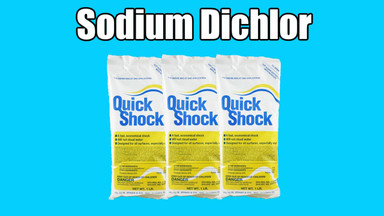All Shock is Not Created Equal - Part 3: Dichlor
Published by EZ Pool & Spa Supply on 05/16/2017
Posted in: dichlor, dichlor shock, pool shock
In our running article on shock let’s discuss another alternative – dichlor. It’s full chemical name is sodium dichloro-s-triazinetrione, but unless you’re a chemist we’ll stick with dichlor! Dichlor comes in granular form in a wide range of percentages (strengths), and may have other active ingredients combined with it for multiple purposes.
Dichlor is available in a range of anywhere between 15% and 99%. Although it may not be commonly used by some pool owners for routine shocking, dichlor has some advantages over other types of chlorine. For one, dichlor has a built in stabilizer that keeps chlorine from burning off due to the sun. Most pool owners add stabilizer, or cyanuric acid to lessen and control burn-off. For this reason some decide to use dichlor, especially at the beginning of the season when trying to establish and maintain chlorine levels. As long as your stabilizer isn’t excessively high, dichlor can still be used in a pool that has an established level of stabilizer.
In the lower percentages (around 15-20%) dichlor is effective as a “shock and swim” product that allows you to swim 15 minutes after using – always be sure to read label. This is what I like to call a “polite shock” in that it quickly establishes a low level of chlorine and allows for swimming almost immediately. Most of the dichlor sold in this range will quickly boost the chlorine 1 ppm typically by adding 1 pound per 10,000 of pool water. Product in the higher ranges, say 50-65%, is often cut with other active ingredients that give multi purposes – shocking to destroy contaminants, sanitizing by killing bacteria, and preventing algae before it starts. Dichlor in the high 90% range is used by many spa owners because it does not contain a lot of inert ingredients (this is more important in such a small body of water), and dissolves extremely quickly. We hope that you find this article helpful and consider EZ Pool & Spa Supplies, Inc for your future pool and spa chemical needs.
Next time we’ll discuss non-chlorine shock and its uses.
Until then…keep swimming!
Related:



